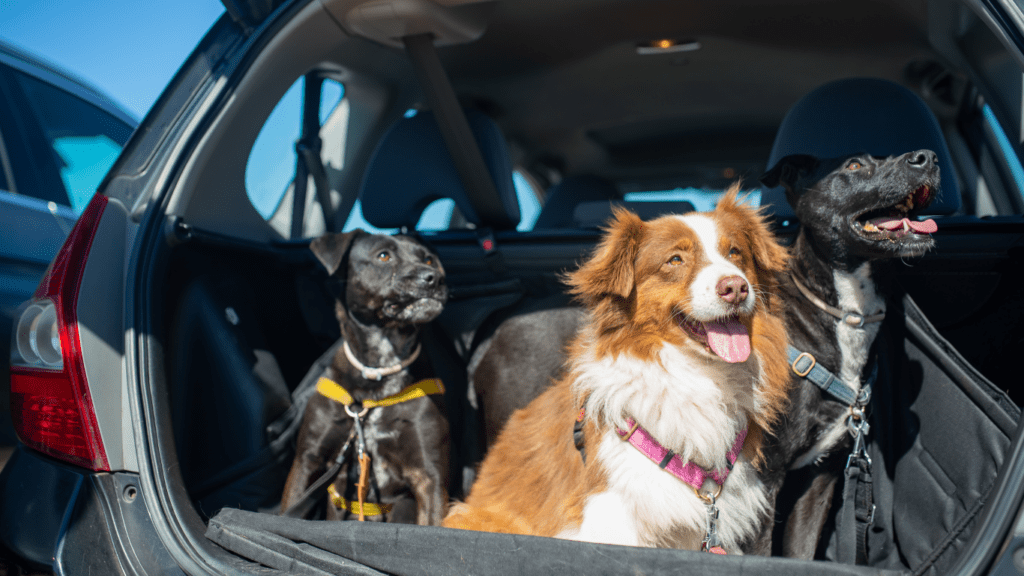As a pet owner, I’ve witnessed firsthand the profound bond that forms between us and our furry companions, especially during the lockdowns of the pandemic. However, as the world gradually reopens, many pets are experiencing a new challenge: separation anxiety.
In this article, I’ll delve into the complexities of pet separation anxiety post-pandemic, shedding light on the latest insights and strategies to help both pets and their owners navigate this transition.
The shift from constant companionship to periods of solitude can be unsettling for pets accustomed to our constant presence. Understanding the root causes and behavioral cues of separation anxiety is crucial in providing the necessary support and reassurance to our beloved animals.
With new research and expert perspectives emerging in this evolving landscape, I’ll explore practical tips and techniques to ease this transition and strengthen the bond between pets and their families.
Overview of Pet Separation Anxiety Post-Pandemic
Exploring the landscape of pet separation anxiety in the post-pandemic era reveals unique challenges for both pets and their owners. As we navigate the shift from constant companionship to periods of solitude, pets may experience heightened levels of distress and anxiety.
Understanding the underlying causes and behavioral indicators of separation anxiety in pets is crucial in providing the necessary support during this transitional period.
Transitioning from an environment of prolonged togetherness to one of intermittent absence can be particularly daunting for pets accustomed to constant human presence. Signs of distress such as excessive barking, destructive behavior, or inappropriate elimination can manifest in response to this newfound isolation.
Recognizing these behavioral cues is vital in addressing and mitigating the impacts of separation anxiety in pets. In this new landscape, pet owners play a pivotal role in fostering resilience and emotional well-being in their furry companions.
By developing strategies that focus on strengthening the bond between pets and their families, individuals can help alleviate the stress associated with periods of separation. Building a sense of security and predictability through structured routines and positive reinforcement can aid in easing the transition for pets experiencing separation anxiety post-pandemic.
Impact of Pandemic on Pet Behavioral Changes
During the pandemic, I’ll go over how the changes in our daily routines affected our furry friends’ behavior.
Increased Time Spent with Pets
Spending all day at home during the pandemic, I found myself giving my pets more attention than ever before. This sudden increase in interaction can lead to heightened dependence in pets.
Lack of Alone Time for Pets
With constant companionship during lockdowns, pets got used to having us around all the time. As a result, they may struggle with being alone again after restrictions ease.
Identifying Pet Separation Anxiety Symptoms
Recognizing pet separation anxiety symptoms is crucial for pet owners to provide necessary support during the post-pandemic transition. Pets experiencing separation anxiety may display various behavioral cues that indicate distress. Common symptoms include:
- Excessive vocalization: such as incessant barking or howling, especially when the pet is left alone.
- Destructive behavior: like chewing furniture, doors, or personal belongings, driven by anxiety and stress.
- Pacing or restlessness: where the pet appears agitated or constantly moving in an attempt to cope with their anxiety.
- House soiling: including urination or defecation indoors, even though the pet is house-trained. This behavior can stem from anxiety about being separated from their owner.
Understanding these key symptoms can help pet owners identify when their furry companions are struggling with separation anxiety. By recognizing these signs early on, owners can take proactive steps to address their pets’ emotional well-being and provide the necessary support during this challenging period.
Implementing Strategies to Ease Pet Separation Anxiety
Transitioning pets back to a routine that includes periods of time alone is essential for addressing separation anxiety effectively. It’s important to implement strategies that can help ease this transition and support pets during this adjustment phase.
Here are some practical approaches to alleviate pet separation anxiety post-pandemic:
- Gradual Separation Training: Starting with short periods of absence and gradually increasing the time away can help pets adapt to being alone. This method helps build their confidence and reassures them that you will return.
- Create a Safe Space: Designating a specific area in your home where your pet feels safe and comfortable can ease their anxiety when left alone. This space should include familiar items like bedding, toys, and perhaps an article of your clothing with your scent.
- Provide Interactive Toys: Interactive toys, puzzles, or treat-dispensing devices can keep pets engaged and mentally stimulated while you’re away. These toys can distract them from feelings of loneliness and provide a source of entertainment.
- Establish a Routine: Consistency in feeding times, walks, and play sessions can help create a sense of predictability for your pet. A structured routine provides comfort and stability, reducing anxiety levels when faced with separation.
- Desensitization: Gradually exposing your pet to triggers of anxiety, such as picking up keys or putting on a coat, without actually leaving can help desensitize them to these cues. This approach can help prevent anticipatory anxiety associated with impending departures.
- Seek Professional Help: If your pet’s separation anxiety is severe or persistent, consulting a veterinarian or animal behaviorist is recommended. They can provide tailored advice and behavior modification techniques to address your pet’s specific needs.
By incorporating these strategies into your pet’s daily routine, you can help them adjust to post-pandemic changes and reduce separation anxiety. Remember, patience, consistency, and understanding are key in supporting your pet’s emotional well-being during this transition period.


 Elena Palen is an integral part of the team behind Animal Potty Care, contributing her knowledge in pet travel care and innovative solutions for on-the-go potty training. Elena’s attention to detail ensures that pet owners have access to reliable, practical tips for keeping their pets comfortable during trips. Her contributions to the platform help make travel with pets a seamless experience, providing users with creative solutions and advice to maintain their pets’ routines while on the move.
Elena Palen is an integral part of the team behind Animal Potty Care, contributing her knowledge in pet travel care and innovative solutions for on-the-go potty training. Elena’s attention to detail ensures that pet owners have access to reliable, practical tips for keeping their pets comfortable during trips. Her contributions to the platform help make travel with pets a seamless experience, providing users with creative solutions and advice to maintain their pets’ routines while on the move.